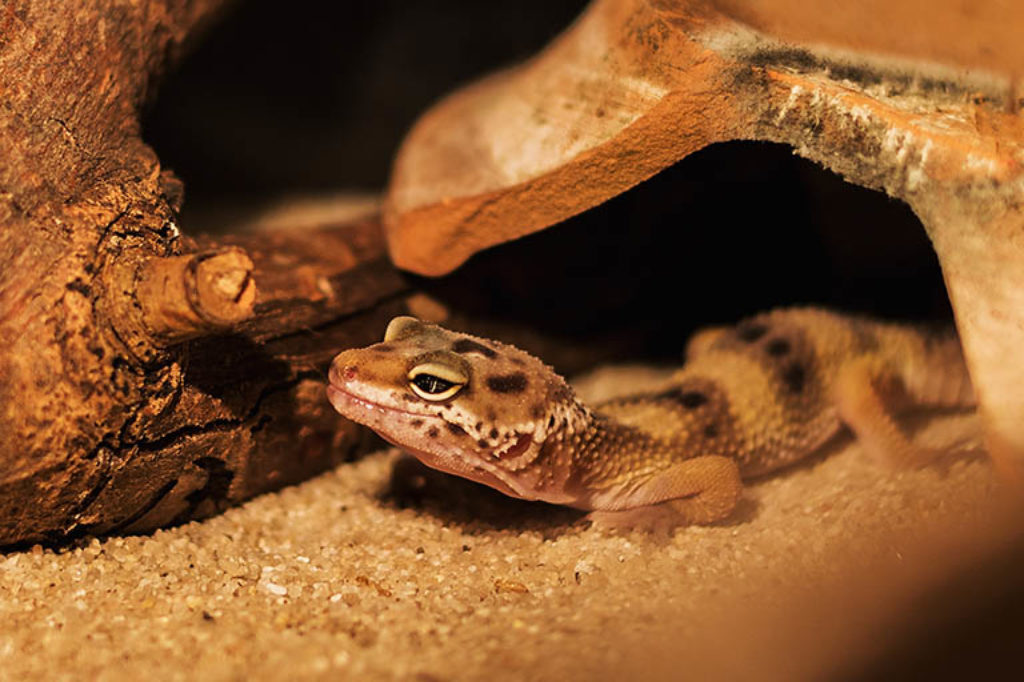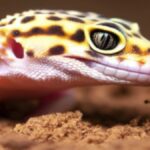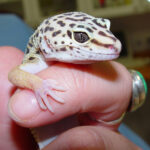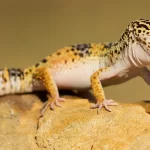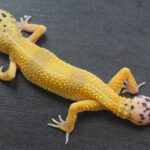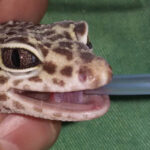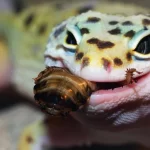After a female Leopard gecko has deposited her eggs, they need to be in an optimal environment to be able to hatch. The most important environmental factors that determines viability of the embryos are the temperature and the humidity.
Introduction to Leopard geckos egg incubation temperatures
Leopard gecko eggs should be incubated between 26 and 33 °C / 79 and 91 °F. This temperature range is significantly lower than the average temperatures of their natural environments.
Leopard Geckos 101 is a free, informative website helping to improve the quality of pet Leopard geckos. If you found value in any of its content, please consider making a donation. Also see the other ways to support Leopard geckos 101.
Egg incubation temperatures of Leopard geckos
In nature, female Leopard geckos will choose the most desired spot to deposit their eggs. This will usually be in a self-dug hole in a shaded, moist patch of sand. Being underground, the temperatures that these eggs are exposed to are significantly lower than the environmental temperatures of their natural occurring deserts areas (often rising to above 50 °C / 122 °F). The combination of being in shade, being underground and the added moisture will contribute to a lower natural incubation temperature.
For pet Leopard geckos, a special hide box needs to be supplied for females to lay their eggs in. These hide boxes need to be filled with a moist substrate, such as vermiculite, peat or sphagnum moss. Also see suitable substrates for Leopard geckos for more information. Although some Leopard gecko eggs will likely hatch by keeping them in the hide box inside the keeping enclosure, it is better to transfer them to an incubator. By making use of an incubator, the egg will not only be safer, but the temperature and humidity can be controlled better.
Leopard geckos have, what is called, temperature-dependent sexual dimorphism. This means that the temperature at which Leopard gecko eggs were incubated has an effect on the gender of the babies. Having manual control over the incubation temperature can allow Leopard gecko breeders to manipulate the ratio of male to female Leopard gecko babies. Also see breeding with Leopard geckos for more information.
The male to female ratio is much higher at warmer average incubation temperatures (31-33 °C / 88-91 °F). More females will be born if the incubation temperatures were dropped to between 26 and 27 °C / 79 and 81 °F during the first 3 weeks and then increased to a higher incubation temperature (31-32 °C / 88-90 °F) after that. A more-or-less equal amount of male and female Leopard gecko babies will be born when the eggs are incubated at temperates ranging from 29 to 30 °C / 85 to 87 °F.
Sustained average temperatures of above 33 °C / 91 °F might dry the eggs out and can quickly kill developing embryos. Average temperatures below 26 °C / 79 °F will lead to prolonged egg incubation periods. Lower incubation temperatures will also increase the humidity and make the environment more prone to bacterial and mould growth, which will kill the eggs.
During the incubation period, owners should constantly monitor and record the temperature of the incubator. Temperatures can be measured using a thermometer. The humidity of the eggs should also be monitored. Depending on the incubator used, monitoring procedures should take into consideration temperature drops which might affect the eggs and the overall incubation period.

